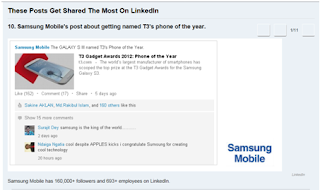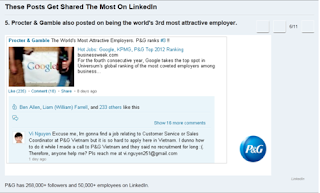I’ve started the “What’s your Brand” series by saying each
of us has his or her own identity and it takes great insights to build it into
a great brand.
So let’s start with the
name itself. I came to the United States
in 1992 with my Chinese passport showing my Chinese name 符海京 (Fu Haijing).
In the past 13 years, I have been traveling the world with my American
passport showing my name Helen Fu Thomas. Interestingly all my friends across
the globe call me Helen (or even Miss Helen).
Helen has become an old fashioned name in the US. All of the Helens I have met except for one
are either Asian or English. The most
distinguished Helen Thomas, of course, is the retired White House
correspondent. It turned out she and I were
both born under the sign of Leo, but 48 years apart. It was all coincidence as my first name and
last name were both given not by choice.
The point is that whether you are aware or not, all names have meanings
and connections.
Conversely, I have been helping American brands and
companies localize their English names into Chinese names that will stick. But why Chinese? Why can’t we just use BMW, IBM and Coca Cola
as they are in the rest of the world?
Chief Marketing Officers would always argue for the consistent branding
identity, and I don’t blame them. The
main reasons are relevance and emotion connection; but more importantly, the
reality is that if you don’t have your own Chinese characters chosen and
trademarked, you may end up with something in Chinese that you didn’t choose
and don’t like. Someone may argue that
there is not just one Chinese language anyway.
Cantonese and Mandarin, for example, are two different spoken
dialects. The situation is different
from Europe, where both spoken and written languages are different among most
of the countries. In China among 1.2 billion people and many different
provinces and spoken dialects, there is one unified written language and that
is Simplified Mandarin Chinese. Because internet
and mobile devices are spreading so rapidly, these Chinese characters are
becoming the second most used languages in the world. So having your Chinese name and website for
searching and education purposes is becoming a “must have” for all global
marketing firms. Google translation
doesn’t give you the personality, creativity and relevance you desire.
Here are the top 50 most-searched for luxury brands in China,
published by the Digital Luxury Group.
All of these global brands have their Chinese names. Interestingly if you can identify the
characters, the two Chinese characters for Audi (No.1) and Dior (No. 8) are the
same but reversed in order, that is 奥迪(ao-di phonetically) and迪奥 (di-ao) respectively. These are different industries and different
targeted audience in terms of gender (men vs. women) but use the same
characters in opposite order based on phonetic localization. And almost all of these 50 brands have
adopted Chinese names based on the pronunciation, except for Intercontinental
(No. 50) 洲际 (zhou-ji) which is based on the
meaning. When I was with LeapFrog, we
chose 跳蛙 (tiao-wa) meaning “jumping frog” that is
quite popular with positive energetic image for learning.
If you are not convinced that a Chinese name is necessary,
take a look at the impact of language differences by the Digital Luxury Group,
which shows that 76% of people searched Burberry using the unofficial Chinese
name 巴宝莉 (ba-bao-li) vs. its official Chinese name博柏利 (bo-bai-li) 15% vs. its English name Burberry only 9%.
Everyone that knows anything about brand localization would
talk about Coca Cola and its Chinese name 可口可乐 (ke-kou-ke-le) ;
and how clever it is for the name created based on the sounds to have such positive
meanings of tasty and happiness. That’s
successful branding in the Chinese culture.
It has become such a classic that 可乐was adopted
by Pepsi so that Pepsi Cola becomes 百事可乐
(bai-shi-ke-le). Now take a look at the
global Google Trend between the English and Chinese names.
I wouldn’t underestimate one’s Chinese name for its global
branding at all given the growing consumption power and dominant web presence of
the Chinese people. Now looking at the
technology brands on Google Trends using English and Chinese names separately,
HP (惠普)and Lenovo (联想)are almost reversed, while
Apple (苹果)
is quite consistent between the two languages (likely due to American and
Chinese demographics). While Apple has surpassed Microsoft(微软), the gap between the
lines in Chinese is much bigger than in English. Does that mean that Chinese perceives Apple
as much more prestigious than Microsoft?
One of the main
reasons for the need of Chinese brand names is the fact that the internet world
is divided between inside and outside China, with different search engines, for example Google 谷歌 vs. Baidu 百度, and
social media, for example Twitter vs. Tencent 腾讯, in two separate cyber worlds.
While China may be behind in many areas of research and development, it
is certainly head-to-head with the rest of the world in terms of internet
development. It’s fascinating to see how
the Chinese, who were isolated by physical and geographical barriers in the
past, are now quickly jumping on the mobile phone and web infrastructure. They are ahead faster because they don’t have
to replace what is already in-place over years of development by the western
world, but build the best and fastest from the ground up. And the power of over 500 million people
using mobile devices to communicate in one textual language, one market and one country is
historical.















